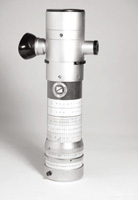Out to Lunch
Veteran
Before dishing out a few hundred dollars, download and try the light meter apps on your phone. Many of them are for free. Cheers, OtL




Thanks @Chriscrawfordphoto, I do remember that article but could I not find it. I was searching on the wrong term - extinction meter - and found a different article Roger wrote.That is an SEI Photometer. Probably the best spotmeter ever made. It has a 1/2 degree angle of view and works in far lower light level than modern spotmeters. Our sadly departed friend Roger Hicks had one and wrote an article about it:

The SEI PhotometerA Legend Among Spot Meters
Few people realize that photographic spot meters date back some 2/3 of a century. The very first was builtwww.shutterbug.com
The book "Exposure Manual" by Dunn and Wakefield has a long chapter devoted to the SEI. The book was published in the UK in four editions from the 1950s to 1981; if you're an exposure meter geek, it is a fascinating read. Weston meters are also talked about a lot in the book. The authors actually designed the last version of the Weston Invercone for Sangamo Weston!
The 3rd and 4th editions of the book are the most useful, and the third seems to be a little more common than the 4th. They're somewhat hard to find in the USA.


My camera since 1977 by Richard, on Flickr
This light meter is my easiest to use. I have been using a Sekonic 308 a bit lately but the on-off switch alone slows me down sometimes. It's small and dense and can be lost in the bottom of a pocket. This Gossen is light and great for the inside pocket of a jacket, as it sits high in the pocket and can be quickly lifted out. Same with the outer pocket of a coat. The controls on the face of the meter are so intuitive. The read out is big, but no backlight. If there are two meters on the table I'll grab this one every time.
It probably has to do with my phone but I have never gotten a reading from an app anywhere near that of an in camera meter except by accident.I use app on phone! Looks like my dead Ikophot by Zeiss. Sometimes I don't use meter reading, simply camera on phone!
small sensor camera Nikon L4.
Nice! Looks like a Walkman 🤣!Just ordered this:
View attachment 4828400
From Roberts Camera. Should have it by Tuesday. I have a L-208 and it's ok but I wanted something a bit more advanced.
I have an older L-28 A2, but the lumisphere can drop out occasionally. I read somewhere that from the L-28C2 model onwards the lumisphere changed and is threaded. Does that mean its more secure? I really like my L-28 A2, and would consider an L-28C2 or 398A but only if the lumisphere is fixed on more securely. Anyone know about that?If you want simple and reliable then I'd say go with a meter like the current Sekonic L-398A. They don't require batteries and they last for years - I bought my L398 in college and it's still working perfectly after 30+ years.

